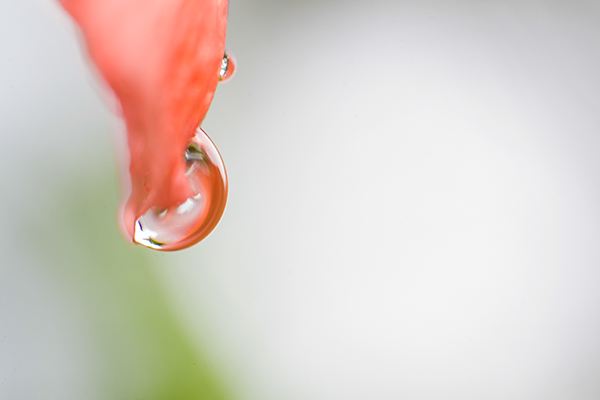The post Reverse Lens Macro Photography: A Beginner’s Guide appeared first on Digital Photography School. It was authored by Andrew S. Gibson.

If you want to capture beautiful close-up images but don’t want to spend hundreds (or thousands) on a macro lens, then you’ve come to the right place.
Because in this article, I’m going to explain everything you need to know about reverse lens macro photography. It’s a simple technique that lets you turn a standard lens into a macro lens so you can capture photos like this:

In fact, if you already own a 50mm prime lens or a standard kit lens (in the 18-55mm focal length range), then the reverse lens macro technique is the least expensive way to capture magnified images.
So let’s dive right in, starting with the absolute basics:
What is reverse lens macro photography?
Reverse lens macro photography is a method of capturing highly magnified images using an interchangeable lens camera, a lens, and a cheap adapter. You turn your lens around so the rear element points outward, then use an adapter to attach the reversed lens to your camera body (or to another lens).
In other words: You take your lens. You flip it around. And you’ll be able to shoot at macro magnifications.
If you’ve never seen the reverse lens macro technique, it may seem a bit strange – after all, why does reversing a standard lens let you shoot at high magnifications?
But it really does work, and the diagram below shows why. In normal use, a 50mm lens focuses light from far away to create a much smaller image, one that fits onto film or a digital sensor (which is often around 35mm wide). Reverse the lens and the opposite occurs: the 50mm lens magnifies what it sees, giving near life-size reproduction:

How to do reverse lens photography
There are two ways you can use the reverse lens macro technique:
1. Single lens reverse macro
This method involves reverse-mounting one lens to the front of your camera. First, purchase a reversing ring (also known as a reverse ring) like this one:

You can buy these adapters for cheap on Amazon. One side screws onto the end of your lens like a filter, while the other attaches to your lens mount. Here’s a reversing ring in action:

Note that the reverse macro technique works best if you use a lens with a manual aperture ring. That way, you can stop down to increase the zone of sharpness (which is very helpful because depth of field decreases as you get closer to your subject).
Unfortunately, if your reversed lens doesn’t have a manual aperture ring, you won’t be able to make any f-stop adjustments and you’ll be forced to work at your lens’s maximum aperture. But while this can be inconvenient, don’t let it stop you – you can use a reversed lens at its widest aperture to take some beautiful photos. You just have to get creative!
2. Twin lens reverse macro
This reverse lens macro technique is less popular but will get the job done. Instead of reverse-mounting one lens to your camera, you mount one lens normally, then reverse mount a second lens on the front of the first, like this:

The actual mechanics are nearly identical to the single lens technique discussed above; simply purchase a coupler ring (shown below). Then use it to mount the second lens to the first.

Now, when using the twin lens reverse macro technique, the reversed lens acts like a powerful close-up filter, except that it’s much stronger than any filter I’ve encountered. In fact, the twin lens technique offers two major benefits over the single lens technique:
- It offers insanely close magnifications. Depending on the focal lengths you use, you can achieve up to 3x life-size reproduction. (That’s three times as close as most professional macro lenses!)
- It increases your depth of field flexibility. You can leave the reversed lens open at its widest aperture, while stopping down the primary lens to increase depth of field (even if you don’t have a manual aperture ring).
Note that you can do this technique with essentially any lenses, though the longer the focal length, the more magnification you’ll achieve. What’s most important is that the filter thread sizes on the two lenses match – that way, you can buy a coupler ring that will easily join them together.
(If your lenses have different filter threads, you do have the option of purchasing a step-up ring in addition to your coupler ring, but this can be inconvenient.)
Caring for the reversed lens
The reverse macro technique does leave the rear element of your reversed lens open to the elements, regardless of which method you use. So you should always work carefully to avoid scratching the exposed element.

If you have an extension tube, you can attach it to the back (now front) of the reversed lens, as I did in the photo above. This helps protect the rear element and also acts as a lens hood.
Also, because of the risks to the lens, I’d recommend using relatively cheap glass, like a 50mm f/1.8.
Image sharpness
The reversed lens technique gets you so close to your subject that it’s virtually impossible to handhold the camera. For the sharpest results, use a tripod to keep the camera steady and use a cable release to fire the shutter.
I find it best to use a reverse lens macro setup indoors, especially for delicate subjects like flowers. If you try it outside, the slightest breeze can move the flower and spoil the photo.
Of course, you can always embrace a blurry result and create some interesting abstract shots – but if your goal is to create magnified-yet-sharp photos, you’ll need to follow this advice closely.
If possible, stop down your primary lens to at least f/4. That way, you’ll get increased depth of field, and if you’re using the twin lens technique, it’ll help you avoid the softening that may happen when the first lens is at its widest aperture setting.
How to light reverse lens photography

As long as you don’t mind using a tripod and long shutter speeds to obtain the required exposure, natural light will work just fine.
However, flash is also an option. And you don’t need a specialized macro flash – I use a Canon Speedlite with a small softbox (though you’ll probably want to make sure you’re using an off-camera flash to avoid shadows cast by the lens).
A flash and a softbox were all I needed to take the photo featured above. Here’s a diagram of the setup:

In general, I’d recommend you start with natural light, unless you’re relatively familiar with artificial lighting. That way, you can experiment with different lighting qualities and directions and you don’t have to worry about complex lighting techniques.
What lens should you use for reverse macro shooting?

I’ve used a 50mm prime lens for the photos featured throughout this article. And a nifty fifty is a great way to get started with reverse lens macro photography.
But don’t forget that you can try this out with just about any lens (though I do recommend using a cheaper option, just in case your lens gets damaged). Kit lenses like the Canon EF-S 18-55mm f/3.5-5.6 IS II (pictured above) work great.
Reverse lens macro photography: conclusion
Now that you’ve finished this article, you should be able to confidently create a macro photography setup (without spending lots of money on a dedicated macro lens).
Reverse lens macro photography is a lot of fun, so order your reverse ring and get shooting!
Now over to you:
Do you prefer the single lens reverse macro technique or the twin lens reverse macro technique? Do you have any tips for improved macro photography? Share your thoughts in the comments below!
The post Reverse Lens Macro Photography: A Beginner’s Guide appeared first on Digital Photography School. It was authored by Andrew S. Gibson.






























































You must be logged in to post a comment.